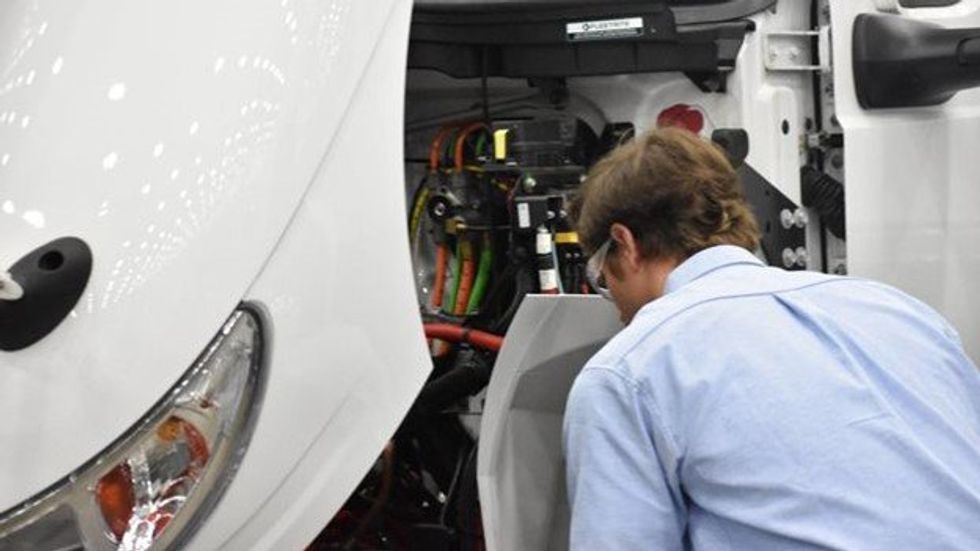5 Overlooked Maintenance Issues That Can Lead to Breakdowns
Five Systems To Keep an Eye On:
Cooling System Neglect
Cooling system issues often go unnoticed until they escalate into major problems, and they are frequently responsible for roadside breakdowns. Coolant additive packages and freeze point specifications can drift out of range if water or an unapproved coolant blend is used to top off coolant levels. This can lead to internal engine damage, EGR cooler failure, or even cavitation of cylinder liners and other components. These issues often begin with subtle symptoms, such as slightly elevated temperatures, unexplained coolant top-offs, or hoses that feel softer than usual. The best way to protect against these problems is through consistent monitoring, regular tracking of coolant usage and proactive replacement of hoses.
Electrical System Corrosion
Electrical failures often appear without warning, but the underlying issues rarely arise overnight. Corroded wires, weakened battery cables and hidden cable damage can create intermittent voltage drops. The challenge is that today's trucks rely on stable voltage for communication between ECUs, sensor accuracy, aftertreatment system performance and starting. Consistent electrical maintenance, including regular battery load testing, voltage-drop analysis and cleaning of grounds, ensures the truck's electrical system functions properly, reduces diagnostic guesswork and reduces over-the-road failures.
Air System and Air Dryer Issues
The air system, particularly the air dryer, is a critical component where even minor oversights can lead to serious consequences. The air dryer is responsible for removing moisture from the air before it enters the brake system. If air dryer cartridges are not replaced on schedule or if the dryer operates below its capacity, moisture can build up. In warm months, this moisture accelerates corrosion within valves, lines and tanks. In colder weather, it can freeze, leading to blocked air lines, slow air build-up and even brake failures that may result in out-of-service violations. To prevent these issues, it is essential to replace air dryer cartridges as recommended by the manufacturer, drain air tanks daily and during preventive maintenance inspections, and closely monitor the performance of the air system.
Aftertreatment Care
Diesel particulate filter (DPF) and aftertreatment issues are among the most preventable sources of vehicle downtime. These aftertreatment systems typically do not fail suddenly; rather, they often display subtle warning signs. One of the earliest and most critical indicators of trouble is an increase in regeneration (regen) frequency. If this issue is not addressed, soot will accumulate more rapidly, regens will become more frequent and the DPF will be forced to operate close to its upper limits.
Upstream Issues
Additionally, upstream problems, such as exhaust leaks, coolant intrusion or injector imbalances, can overwhelm the system with contaminants. Once the system reaches a critical threshold, the truck may enter a derate mode, which can result in towing, damaged sensors, other system failures and significant downtime. Fleets that actively monitor regen patterns, incorporate differential pressure checks into their preventive maintenance routines and clean DPFs at regular intervals are more likely to identify potential issues early.
Other Maintenance Issues That Can Escalate
Several other maintenance tasks often lead to substantial problems when overlooked. For example, tire inflation and alignment issues cause excessive heat, handling issues and premature tire wear. Brake issues can lead to longer stopping distances and potential compliance issues while fuel system issues, such as water intrusion and clogged filters, can rapidly damage injectors and pumps.
Maintenance Habits of High-Performing Fleets
A comprehensive preventive maintenance program coupled with thorough pre- and post-trip driver inspections can reduce unplanned downtime, protect major components, and keep drivers and freight safe.
Penske Truck Leasing follows a rigorous maintenance schedule and uses advanced system analytics and artificial intelligence to identify potential failures, track performance, cut costs and determine the optimal operating life of equipment.
If customers experience an unscheduled issue between PMs, owners and drivers can take trucks to the shop and take advantage of off-hour, round-the-clock scheduling and service to get trucks back into service quickly. Customers can also monitor maintenance status in real time in Fleet Insight™. Penske also offers a 24/7 roadside assistance network with nationwide coverage and replacement vehicles to minimize disruptions and protect driver productivity.



